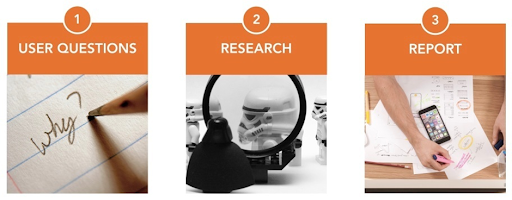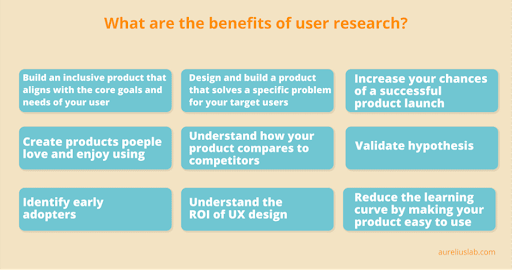The Big Impact of Research Participants in Developing Strong Website Design

When discussing user research concerning website design, most immediately consider usability testing. Usability testing is vital to the design process. Therefore this is only sometimes a negative thing. However, this is simply one component of a user-centered design. Several more insights need to be gleaned through user research, many of which tend to aid in creating entertaining and relevant designs for your target demographic.
User research is a collection of techniques used to comprehend your target clients' requirements better. User research places the individuals who visit your website at the center of the design process. We gain insight into who they are, why they are seeing, and how each design aspect impacts their user experience. When done correctly, firms start employing user research to influence web design and acquire insight into consumer solutions.
Users are the focal point of web design, and it is easier to do so if you know their perspective.
Significance of user research in the web design process
Let's delve deeper into the significance of user research in the web design process.
User research is fundamental to UX design

Let's start by discussing the beginnings of UX design. We like to talk about the importance of the user experience until we're blue in the face. However, let's be honest. Competition is the parent of UX design.
Approximately over the past decade, technology has exploded. The introduction of the first generation iPhone in early 2007 brought about a shift in how the typical person utilizes technology. As a result of changing expectations, businesses have to adjust to remain competitive. Soon, it became a competition to give the finest digital platform experience.
Enter UX
When you build websites, you become familiar with how they function. You are familiar with every feature and can navigate with your eyes closed. If you developed the website with UX in mind, you are undoubtedly relatively confident.

After all, you are highly familiar with it
Except that you are so familiar with it that you likely need to gain perspective on how a first-time visitor feels. UX design alone is insufficient. For first-time visitors to your website to feel genuinely at home, know how to make them feel at home. Suppose you invited your new employer to supper at your home. You create a wonderful beef meal. You've prepared this dish several times and know it's delicious. When your boss comes, you discover she is a vegetarian.
Oops!! Your lunch was delicious but not at all appropriate for your visitor.Conduct some preliminary research
The method of web designing is similar but personalizes your website to the consumers that visit it. Comprehend their tastes, which tend to differ from a typical user. The research reveals everything about a consumer that affects their engagement with your website's design.
Let's discuss the importance
You need to describe relevance as having a substantial and verifiable influence on the issue at hand or having societal significance. In web design, we interpret this to mean that the site provides the user with something of value and is in sync with their requirements.
For instance, let's imagine there are two shoe-selling businesses in Chicago. One focuses on premium dress shoes for the workplace and special events, whose target market is 30-45-year-old men. While the second shop focuses on athletic footwear, their target demographic is similarly male, ages 18 to 25.
Numerous hypotheses are possible on how standard UX design helps both websites. However, the primary client is distinct. For instance, an athletic shoe firm intends to profit more from video material showing athletes. Still, a professional shoe company intends to gain the most from a podcast or blog on men's professional grooming.
Additionally, there are variations in the client journey. The design of the professional shoe company's website needs to be more nurturing, whereas the athletic shoe company's website needs to be targeted to a consumer who is more inclined to make an impulse buy. It is of the utmost importance to fully comprehend who your consumer is and what motivates their behaviors while visiting your website.
User studies and ROI
We are aware that user research comes at a cost. An investment of time and money is necessary to undertake exhaustive research. Then there are the costs associated with revamping your website depending on the results.
The customer experience is anticipated to surpass pricing and product as a significant brand differentiator by 2020. A 10% improvement in a company's customer service score seems to have a revenue effect of over $1 billion.
That has a significant influence on ROI. When the outcomes are so substantial, cutting corners and preceding user testing is not worth it.
The understanding
User research transcends conventional usability testing and reaches the essence of the user experience. Why waste all that effort on a website design that is less focused on your target client when you've likely spent time refining your marketing plan to attract a specific demographic?
User research is essential to the web design process because it ensures that the experience you create is relevant to your intended audience. It is also an investment with a long-term return on investment, as it becomes increasingly essential to comprehend consumers and their habits to drive growth.

Recruitment of study participants
It is vital to recruiting the correct people for user research if you want your design to succeed. The recruit research participants must be representative of your target audience or end users; otherwise, the results aren’t applicable. Your difficulties in recruiting participants rely on your selection criteria. It is simple to recruit people if your standards are generic, such as age group and area. Things get more complicated and time-consuming if your requirements are more detailed.
Recruiting participants for UX research or a user sample

To do good user research, you must recruit individuals representative of your (possible) users. These participants should have the same qualities as your final clients or target market. Numerous goods and services have diverse user kinds or groups. Thus it is necessary to recruit a wide variety of study participants to exploit these differences. Research each group independently when working with a product with various user groups if time and resources allow.
Occasionally, organizations outsource recruiting research subjects to a specialized business or organization. When choosing potential participants on behalf of their customers, these specialized businesses also have to consider demographics and other attributes and characteristics. The company requires knowledge about the target users and the investigational context. Thus the recruiting team needs to collect this information before beginning the recruitment process.
Who should be recruited
When individuals are pressed for time, they tend to commonly utilize coworkers as test subjects. However, due to the possibility of prejudice, it seems to be prudent to take caution while employing your coworkers.
If the workers feel that they should say positive things as they know you or they may be knowing more about the product, the study sessions aren’t likely to provide the intended findings.
Another concern is déformation professionnelle, a condition when many testers from the same profession come into touch with a product they must evaluate. While this doesn’t matter if you align your project with the ideal niche — for instance, if you test your game with a group of employees from a game maker — the danger is serious if too many are from the same business. Not having connected your design solution with the demands of your intended audience, they then evaluate the design based on their industry expertise. This results in a skewed perception of the functionality and appeal of your work.
There needs to be a ready supply of individuals eager and able to participate in specific initiatives, making recruiting a simple procedure.
However, when a product has a specific target demographic, recruiting must find the most qualified people from the pool of applicants. Recruitment should be reasonably straightforward, for instance, while testing a new mobile app for determining which supermarket gives the lowest pricing on certain goods. The intended audience is the general public; however, you tend to have different criteria, such as a particular age group or economic bracket. Recruiters need to approach individuals upfront if they are curious about participating in the study.
In contrast, if you are designing a new and complex system for a specific group of employees in a corporation, you need to either collect a sample of these future users or determine the abilities and duties required for this function and seek a comparable group from another source. In such a scenario, recruiting takes time due to the restricted pool of possible participants.

The bottom line
It is essential to recruit the correct participants to obtain valuable data from your user research. Your participation must be representative of your end users. Examine the criteria for your study participants before beginning recruitment. When your standards are generic, such as age and geography, it is generally straightforward to recruit people for your study.
However, when your criteria are more precise, it becomes more challenging and time-consuming. However, incorporating extreme and mainstream consumers in the research phase tends to increase your chances of connecting with your genuine target customers in the future. Consider accessibility concerns and people with impairments at all times.
About Author- Fatema Zariwala is a writer and editor based in Mumbai, India. She has 7 years of experience writing blogs and articles. She likes to read non-fiction and play board games with her kids during her free time.
Copyright © . All Rights Reserved